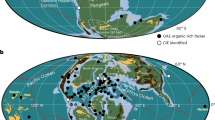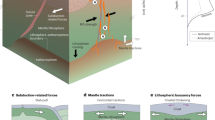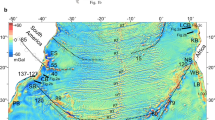Abstract
THE theory that the continents have shifted their positions during geological time and, possibly, are still in motion has lately excited much discussion. The principal obstacle to its acceptance is the difficulty of adducing a force adequate to bring about the movements. Many years ago Osmond Fisher (“Physics of the Earth's Crust” p. 339) ascribed general continental movements of this kind (accounting for the Atlantic rift, etc.) to the disturbance of the Pacific basin due to the genesis of the moon, on Darwin's well-known theory. Lately, Wegener has brought forward much evidence in favour of continental movements. But I do not think he has discovered any adequate source of the motion. The polefluchtkraft is too feeble; it is purely meridional in direction and is inconsistent with the existing distribution of the land. It is probably ineffective. A differential soli-lunar attraction on the emergent features of the continents is obviously inadequate. The fact is Wegener works out the theory on the basis of a westerly drift of the continents. In doing so I think he is in error. An adequate force appears available provided an easterly drift is postulated; and so far as I can see the theory grows in probability when examined from the new point of view.
This is a preview of subscription content, access via your institution
Access options
Subscribe to this journal
Receive 51 print issues and online access
$199.00 per year
only $3.90 per issue
Buy this article
- Purchase on SpringerLink
- Instant access to full article PDF
Prices may be subject to local taxes which are calculated during checkout
Similar content being viewed by others
Author information
Authors and Affiliations
Rights and permissions
About this article
Cite this article
JOLY, J. Continental Flotation and Drift. Nature 111, 79–80 (1923). https://doi.org/10.1038/111079b0
Issue date:
DOI: https://doi.org/10.1038/111079b0
This article is cited by
-
THE MENDELÉEFF—BRAUNER TRADITION IN CZECH CHEMISTRY
Nature (1942)



